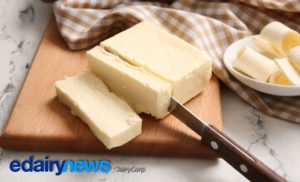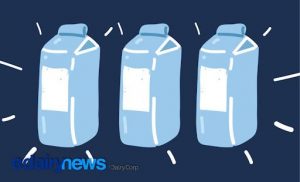
One of the most significant upgrades of humankind occurred around 10,000 years ago, when we emerged from being hunters and gatherers into a society that, for the first time, raised animals and cultivated vegetables. The domestication of species arose spontaneously, bringing with it very positive changes in the way of life that facilitated our physical, mental and social evolution.
Among the domesticated species, the most traditional in dairy farming is the cow, and its welfare is key in a dairy farm. Since milk production is the result of a physiological process driven by hormones whose presence or absence has everything to do with its stimulation.
We always say: a cow that is not happy does not give milk. That is why, in addition to complying with the premises of Animal Welfare, which are Absence of hunger and thirst, adequate environment (shelter, rest, comfort), absence of disease, expression of the normal behavior of the species, absence of mental suffering (stressful situations that produce fear or anxiety), the animals are given extra comfort, which also result in extra comfort for the people who work with them.
There are different positions based on ethical or philosophical issues, but they are subjective and secondary when contrasted with the reality of the practice. It goes without saying that people who dedicate themselves to dairy cattle breeding have a very particular affinity with their rodeo, and a love and passion for their work that are not compatible with animal mistreatment.
The environmental side on which the resistance is based, questions the extension of land that needs to be occupied and the impact that the climate is supposed to suffer with the breeding of cattle for milk and dairy products.
The solid surface of the Earth is 15,000 million hectares, only 1,100 million hectares of soils are agricultural, other 4,000 million hectares are livestock soils where, due to limitations of slope, stoniness, sodicity, salinity, excess of humidity or excess of drainage, they are not sown; they are only used for fodder production, which are pastures of different species, indigestible for humans, but not for ruminants that can digest cellulose and convert it into protein of high biological value to feed people. Grazing animals also help prevent fires in times of drought, since they reduce the igneous load of the pastures.
In 2006, the FAO presented a report that satisfied strong anti-livestock groups, which had long been calling for drastic reductions in animal food consumption to “save the planet.” “Livestock’s Long Shadow,” as the report was titled, blamed livestock for climate change, claiming it produced more greenhouse gases than all the world’s transportation. Frank Mitloehner, a researcher at the University of California managed to reverse that report with scientific data, he explained the biogenic methane cycle, in which plants take the carbon they need to produce carbohydrates from atmospheric carbon dioxide; when cows graze, they convert some of it into methane, which is released when they burp and when the manure decomposes, it stays in the air for about 10 years and turns back into the carbon dioxide from whence it came. Quite different from the cycle of fossil fuels, oil, coal and gas, which were stored in the ground for millions of years, and once extracted, are burned and pile up in the atmosphere for 1000 years.
FAO corrected its report in 2013, but no apology or new report will repair the damage it caused and continues to cause with its 2006 report, which became The Bible of the Climate Change Taliban, and the cornerstone of Agenda 2030, to which the world’s governments docilely surrender to shape the future of people on Earth.
As far as health is concerned, milk and dairy are good foods everywhere you look, except for those who have particular problems with milk protein allergy or lactose intolerance. We can be allergic to peanuts, and no one dared to demonize peanuts for that. Also by now it has been ruled out that milk and dairy may contain hormones or antibiotics that get into our bodies putting our bodies at risk.
The ability to digest milk properly depends on the enzyme lactase. For thousands of years, only small children generated lactase and as they grew older, the gene responsible for doing so was turned off. Humans evolved and approximately 7,000 years ago, a genetic mutation arose and lactose tolerance became increasingly common in the population.
There are theories that it may have been during a famine, where being able to feed on milk may have been an evolutionary advantage. It is also believed that it may have been an adaptive response to the domestication of cattle. The occurrence of this mutation is the normal action of evolution and there is nothing unnatural about it. It is not unnatural to drink milk as an adult, it is fantastic to be able to do so, because it is delicious, nutritious and healthy, rich in protein, calcium and many other nutrients that are not matched in quality and quantity in other foods.
Milk and dairy products form a group of foods that provide key nutrients for our health and that we do not have to give up, whether you are concerned about animal welfare, ecology or are intolerant because there is a whole range of milk and dairy products on the market that are reduced in, or lactose-free.
Man, a rational being, is the only species that has complete control over its diet, and chooses milk and dairy products for the many benefits they offer: the calcium needed to build bones and teeth, a balanced blood pressure, an active mind, strong and long-lived muscles, a healthy body weight, an unparalleled rehydration in sport to replace isotonic drinks or water.
If we are reasonable and appeal objectively to reality and the biology of things, to science that is not rigged or ideologized, Her Majesty La Leche will always win every battle.
Consuming dairy products is good, milk is a unique food, which provides nutrients such as carbohydrates, proteins, fats, minerals and vitamins, it is the most complete food ever created; and producing it is a noble task that gives work to millions of people around the world, who love to do it, love animals, watch over their welfare and work hard to take better care of the environment every day.
Did you drink your glass of milk today?
Valeria Guzmán Hamann
EDAIRYNEWS
























